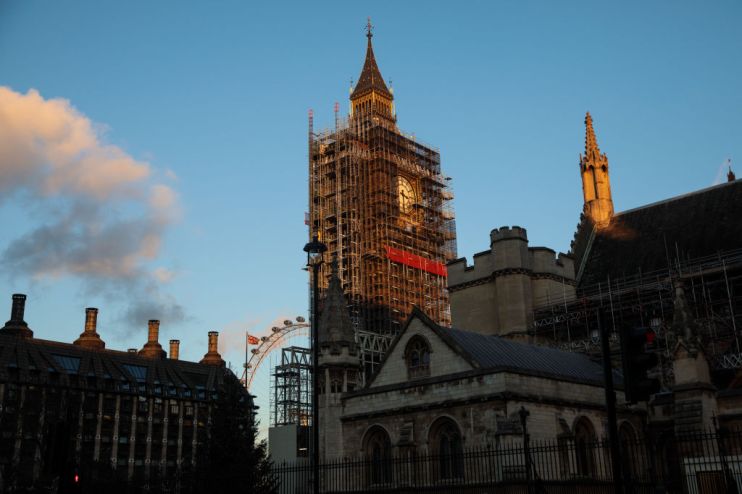Coronavirus: Do governments have any economic bullets left?

From Beijing to London to New York, the trajectory of confirmed COVID-19 cases and its subsequent impact on economic growth has set off alarm bells across the world.
China, which has contributed tremendously to global growth over recent decades, has seen its economy contract for the first time in more than 40 years, while Europe and the US slide into an economic downturn not seen since the 1930s.
To give credit where its due, the policy responses around the world have been as rapid and far-reaching as the virus itself. Government, regulators and institutions, not traditionally known for their swiftness, have conjured colossal fiscal packages to support their economies, while central banks have pulled on their monetary levers to reassure financial markets and shore up investor confidence.
Read more: City A.M.’s #SaveOurSMEs campaign
We have seen a modest recovery in global stock markets, partly due to the convincing display from governments and central banks to do “whatever it takes” to shoulder the economic impact in the short-term – leaving the long-term consequences for another time.
But as forecasts for the global economy become gloomier, how much leverage does the government have to mitigate further contraction, when can they start to reopen the economy and what will this look like?
The message from most authorities is that while we don’t have a vaccine, some form of social distancing will remain in place. This will undoubtedly have an impact on people’s behaviour.
Entertainment, leisure and tourism industries will continue to be hard hit by the measures and, in a tiered re-opening, look set to be among the last to return to some sort of normality.
Increased public expenditure on services such as health and welfare will also begin to take its toll on the already-stretched balance sheets of many economies. From this perspective, getting the global economy back to where we were pre-COVID-19 will be a difficult goal to achieve. And it’s becoming clearer that there are no quick-fixes.
In a bid to ignite a consumer-led recovery, one possibility will be to put money directly into people’s banks with so-called ‘helicopter money’. The United States government has already sent out cheques, while in the UK, the Job Retention Scheme launches this week effectively nationalising a significant proportion of the private sector payroll.
The introduction of a universal basic income (UBI) is also receiving a lot of interest, following trials in several countries including Finland and the Netherlands. This is whereby a state effectively adds the total population to its payroll.
UBI would be a bold way of shoring up consumer confidence, but it doesn’t come without its potential downsides. Without means-testing, it would mean that an equal amount of money would be given to the richest individuals, as it would with the poorest.
Meanwhile, some argue that UBI removes the incentive to work, resulting in greater unemployment and therefore less taxes being accumulated by governments. The less established outcome is that, even with extra money in their bank accounts, it doesn’t necessarily mean consumers will spend. While the verdict is still out on UBI, this approach may seem too much of a risk for policymakers at this stage.
Public investment is a perhaps more of a tried-and-tested option. With interest rates set to remain low, there will be considerable scope for increased spending on public infrastructure, particularly “shovel-ready” projects, which can have a more immediate impact in providing jobs and economic growth.
We’re beginning to see signs of this process already underway. In the US, President Trump is aiming to turbocharge the US recovery with a $2trillion infrastructure spending package while, in the UK, the controversial High Speed Two rail project has been given the green light. The orthodox view is that infrastructure spending will be an important part of the recovery, so expect to see a flurry of announcements on this in the near future
A final consideration is the implications for global trade. We’ve seen how coronavirus has caused many countries to reconsider the security of their supply chains to ensure a reliable flow of essential goods to their population. After this crisis, governments will be looking more closely at how their local economies can best support their local populations. Many may conclude that the supply chains for critical goods are simply too long. Japan, for instance, has already announced that it will be providing funding for companies to bring parts of their supply chains back on-shore. This will likely hike up the cost of production for businesses and potentially the end cost to the consumer. As national security interests broaden, it seems that this is a price many are willing to pay.
As we emerge from the shock phase of the crisis, it’s clear that whichever road policymakers choose to go debt-to-GDP levels will rise across the world. What’s less clear, and perhaps causing anxiousness amongst investors, is who’s going to pay for all this in the long term.
Central banks will likely continue to expand their tool-kits while governments will be faced with some difficult decisions. These won’t come without their own political ramifications. It is likely we’ll see taxes increase, as private sector businesses and earners are asked to pay their fair share – even if this dampens consumer spending.
With this in mind, governments will be cautious in their approach suggesting that, even if the economy reopens with the coming months, the recovery of the global economy may take a lot longer.